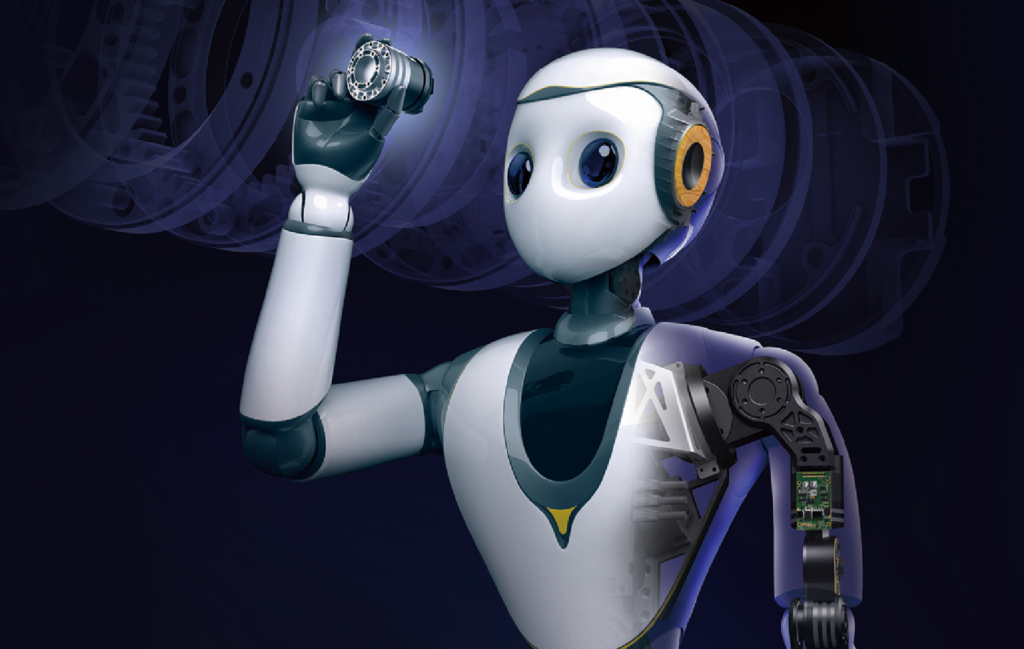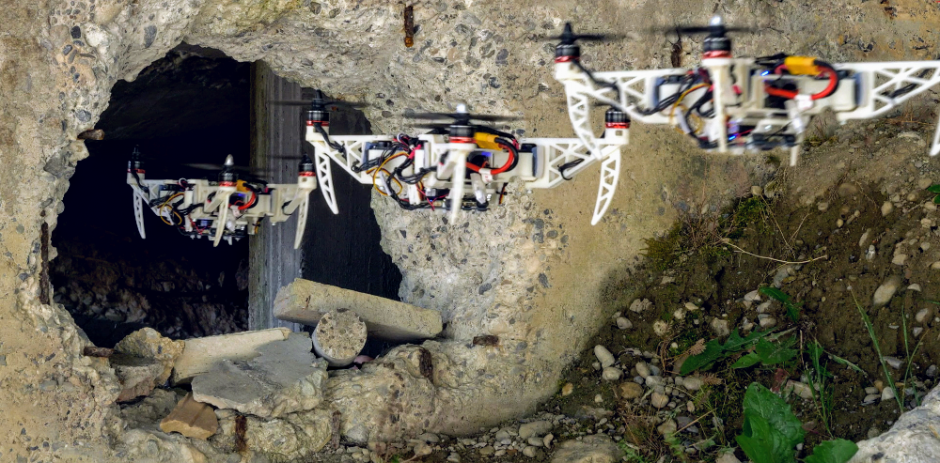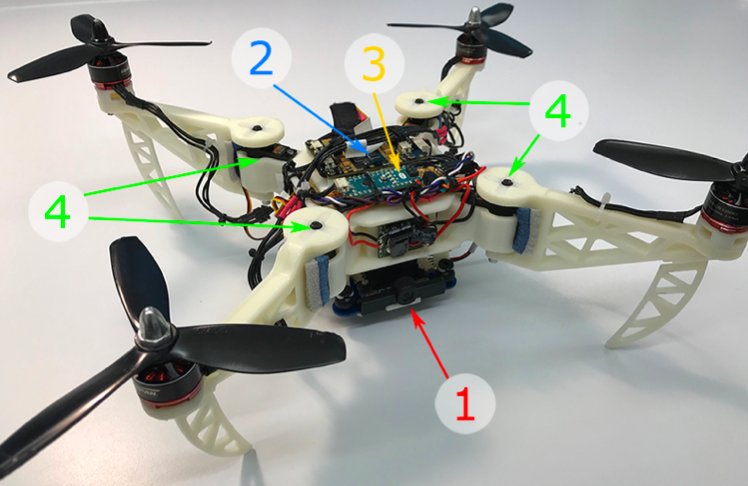
CloudMinds was among the robotics companies receiving funding in March 2019. Source: CloudMinds
Investments in robots, autonomous vehicles, and related systems totaled at least $1.3 billion in March 2019, down from $4.3 billion in February. On the other hand, automation companies reported $7.8 billion in mergers and acquisitions last month. While that may represent a slowdown, note that many businesses did not specify the amounts involved in their transactions, of which there were at least 58 in March.
Self-driving cars and trucks — including machine learning and sensor technologies — continued to receive significant funding. Although Lyft’s initial public offering was not directly related to autonomous vehicles, it illustrates the investments flowing for transportation.
Other use cases represented in March 2019 included surgical robotics, industrial automation, and service robots. See the table below, which lists amounts in millions of dollars where they were available:
| Company | Amt. (M$) | Type | Lead investor, partner, acquirer | Date | Technology |
|---|---|---|---|---|---|
| Airbiquity | 15 | investment | Denso Corp., Toyota Motor Corp., Toyota Tsushu Corp. | March 12, 2019 | connected vehicles |
| AROMA BIT Inc. | 2.2 | Series A | Sony Innovation Fund | March 3, 2019 | olofactory sensors |
| AtomRobot | Series B1 | Y&R Capital | March 5, 2019 | industrial automation | |
| Automata | 7.4 | Series A | ABB | March 19, 2019 | robot arm |
| Avidbots | 23.6 | Series B | True Ventures | March 21, 2019 | commercial floor cleaning |
| Boranet | Series A | Gobi Partners | March 6, 2019 | IIoT, machine vision | |
| Broadmann17 | 11 | Series A | OurCrowd | March 6, 2019 | deep learning, autonomous vehicles |
| Cloudminds | 300 | investment | SoftBank Vision Fund | March 26, 2019 | service robots |
| Corindus | 4.8 | private placement | March 12, 2019 | surgical robot | |
| Determined AI | 11 | Series A | GV (Google Ventures) | March 13, 2019 | AI, deep learning |
| Emergen Group | 29 | Series B | Qiming Venture Partners | March 13, 2019 | industrial automation |
| Fabu Technology | pre-Series A | Qingsong Fund | March 1, 2019 | autonomous vehicles | |
| Fortna | recapitalization | Thomas H. Lee PArtners LP | March 27, 2019 | materlais handling | |
| ForwardX | 14.95 | Series B | Hupang Licheng Fund | March 21, 2019 | autonomous mobile robots |
| Gaussian Robotics | 14.9 | Series B | Grand Flight Investment | March 20, 2019 | cleaning |
| Hangzhou Guochen Robot Technology | 15 | Series A | Hongcheng Capital, Yingshi Fund (YS Investment) | March 13, 2019 | robotics R&D |
| Hangzhou Jimu Technology Co. | Series B | Flyfot Ventures | March 6, 2019 | autonomous vehicles | |
| InnerSpace | 3.2 | seed | BDC Capital's Women in Technology Fund | March 26, 2019 | IoT |
| Innoviz Technologies | 132 | Series C | China Merchants Capital, Shenzhen Capital Group, New Alliance Capital | March 26, 2019 | lidar |
| Intelligent Marking | investment | Benjamin Capital | March 6, 2019 | autonomous robots for marking sports fields | |
| Kaarta Inc. | 6.5 | Series A | GreenSoil Building Innovation Fund | March 21, 2019 | lidar mapping |
| Kolmostar Inc. | 10 | Series A | March 5, 2019 | positioning technology | |
| Linear Labs | 4.5 | seed | Science Inc., Kindred Ventures | March 26, 2019 | motors |
| MELCO Factory Automation Philippines Inc. | 2.38 | new division | Mitsubishi Electric Corp. | March 12, 2019 | industrial automation |
| Monet Technologies | 4.51 | joint venture | Honda Motor Co., Hino Motors Ltd., SoftBank Corp., Toyota Motor Corp | March 28, 2019 | self-driving cars |
| Ouster | 60 | investment | Runway Growth Capital, Silicon Valley Bank | March 25, 2019 | lidar |
| Pickle Robot Co. | 3.5 | equity sale | March 4, 2019 | loading robot | |
| Preteckt | 2 | seed | Los Olas Venture Capital | March 26, 2019 | machine learning automotive |
| Radar | 16 | investment | Sound Ventures, NTT Docomo Ventures, Align Ventures, Beanstalk Ventures, Colle Capital, Founders Fund Pathfinder, Novel TMT | March 28, 2019 | RFID inventory management |
| Revvo (IntelliTire) | 4 | Series A | Norwest Venture Partners | March 26, 2019 | smart tires |
| Shanghai Changren Information Technology | 14.89 | Series A | March 15, 2019 | Xiaobao healthcare robot | |
| TakeOff Technologies Inc. | equity sale | March 26, 2019 | grocery robots | ||
| TartanSense | 2 | seed | Omnivore, Blume Ventures, BEENEXT | March 11, 2019 | weeding robot |
| Teraki | 2.3 | investment | Horizon Ventures, American Family Ventures | March 27, 2019 | AI, automotive electronics |
| Think Surgical | 134 | investment | March 11, 2019 | surgical robot | |
| Titan Medical | 25 | IPO | March 22, 2019 | surgical robotics | |
| TMiRob | Series B+ | Shanghai Zhangjiang Torch Venture Capital | March 26, 2019 | hospital robot | |
| TOYO Automation Co. | investment | Yamaha Motor Co. | March 20, 2019 | actuators | |
| Ubtech | investment | Liangjiang Capital | March 6, 2019 | humanoid | |
| Vintra | 4.8 | investment | Bonfire Ventures, Vertex Ventures, London Venture Partners | March 11, 2019 | machine vision |
| Vtrus | 2.9 | investment | March 8, 2019 | drone inspection | |
| Weltmeister Motor | 450 | Series C | Baidu Inc. | March 11, 2019 | self-driving cars |
And here are the mergers and acquisitions:
March 2019 robotics acquisitions
| Company | Amt. (M$) | Acquirer | Date | Technology |
|---|---|---|---|---|
| Accelerated Dynamics | Animal Dynamics | 3/8/2019 | AI, drone swarms | |
| Astori AS | 4Subsea | 3/19/2019 | undersea control systems | |
| Brainlab | Smith & Nephew | 3/12/2019 | surgical robot | |
| Figure Eight | 175 | Appen Ltd. | 3/10/2019 | AI, machine learning |
| Floating Point FX | CycloMedia | 3/7/2019 | machine vision, 3D modeling | |
| Florida Turbine Technologies | 60 | Kratos Defense and Security Solutions | 3/1/2019 | drones |
| Infinity Augmented Reality | Alibaba Group Holding Ltd. | 3/21/2019 | AR, machine vision | |
| Integrated Device Technology Inc. | 6700 | Renesas | 3/30/2019 | self-driving vehicle processors |
| Medineering | Brainlab | 3/20/2019 | surgical | |
| Modern Robotics Inc. | 0.97 | Boxlight Corp. | 3/14/2019 | STEM |
| OMNI Orthopaedics Inc. | Corin Group | 3/6/2019 | surgical robotics | |
| OrthoSpace Ltd. | 220 | Stryker Corp. | 3/14/2019 | surgical robotics |
| Osiris Therapeutics | 660 | Smith & Nephew | 3/12/2019 | surgical robotics |
| Restoration Robotics Inc. | 21 | Venus Concept Ltd. | 3/15/2019 | surgical robotics |
| Sofar Ocean Technologies | 7 | Spoondrift, OpenROV | 3/28/2019 | underwater drones, sensors |
| Torc Robotics Inc. | Daimler Trucks and Buses Holding Inc. | 3/29/2019 | driverless truck software |
Surgical robots make the cut
One of the largest transactions reported in March 2019 was Smith & Nephew’s purchase of Osiris Therapeutics for $660 million. However, some Osiris shareholders are suing to block the acquisition because they believe the price that U.K.-based Smith & Nephew is offering is too low. The shareholders’ confidence reflects a hot healthcare robotics space, where capital, consolidation, and chasing new applications are driving factors.
In the meantime, Stryker Corp. bought sports medicine provider OrthoSpace Ltd. for $220 million. The market for sports medicine will experience a compound annual growth rate of 8.9% between now and 2023, predicts Market Research Future.
Freemont, Calif.-based Think Surgical raised $134 million for its robot-assisted orthopedic surgical device, and Titan Medical closed a $25 million public offering last month.
Venus Concept Ltd. merged with hair-implant provider Restoration Robotics for $21 million, and Shanghai Changren Information Technology raised Series A funding of $14.89 million for its Xiaobao healthcare robot.
Corindus Vascular Robotics Inc. added $5 million to the $15 million it had raised the month before. Brainlab acquired Medineering and was itself acquired by Smith & Nephew.
Driving toward automation in March 2019
Aside from Lyft, the biggest reported transportation robotics transaction in March 2019 was Renesas’ completion of its $6.7 billion purchase of Integrated Device Technology Inc. for its self-driving car chips.
The next biggest deal was Weltmeister Motor’s $450 million Series C, in which Baidu Inc. participated.
Lidar also got some support, with Innoviz Technologies raising $132 million in a Series C round, and Ouster raising $60 million. In a prime example of how driverless technology is “paying a peace dividend” to other applications, Google parent Alphabet’s Waymo unit offered its custom lidar sensors to robotics, security, and agricultural companies.
Automakers recognize the need for 3-D modeling, sensors, and software for autonomous vehicles to navigate safely and accurately. A Daimler unit acquired Torc Robotics Inc., which is working on driverless trucks, and CycloMedia acquired machine vision firm Floating Point FX. The amounts were not specified.
Speaking of machine learning, Appen Ltd. acquired dataset annotation company Figure Eight for $175 million, with an possible $125 million more based on 2019 performance. Denso Corp. and Toyota Motor Corp. contributed $15 million to Airbiquity, which is working on connected vehicles.
Service robots clean up
From retail to cleaning and customer service, the combination of improving human-machine interactions, ongoing staffing turnover and shortages, and companies with round-the-clock operations has contributed to investor interest.
The SoftBank Vision Fund participated in a $300 million round for CloudMinds. The Chinese AI and robotics company’s XR-1 is a humanoid service robot, and it also makes security robots and connects robots to the cloud.
According to its filing with the U.S. Securities and Exchange Commission, TakeOff Technologies Inc. raised an unspecified amount for its grocery robots, an area that many observers expect to grow as consumers become more accustomed to getting home deliveries.
On the cleaning side, Avidbots raised $23.6 million in Series B, led by True Ventures. Gaussian Robotics’ Series B was $14.9 million, with participation from Grand Flight Investment.
 Keynotes | Speakers | Exhibitors | Register
Keynotes | Speakers | Exhibitors | Register
Wrapping up Q1 2019
China’s efforts to develop its domestic robotics industry continued, as Emergen Group’s $29 million Series B round was the largest reported investment in industrial automation last month.
Hangzhou Guochen Robot Technology raised $15 million in Series A funding for robotics research and development and integration.
That was followed by ABB’s participation in Series A funding of $7.4 million for Automata, which makes a small collaborative robot arm named Ava. Mitsubishi Electric Corp. said it’s spending $2.38 million to set up a new company, MELCO Factory Automation Philippines Inc., because it expects to grow its business there to $30 million by 2026.
Data startup Spopondrift and underwater drone maker OpenROV merged to form Sofar Ocean Technologies. The new San Francisco company also announced a Series A round of $7 million. Also, 4Subsea acquired underwater control systems maker Astori AS.
In the aerial drone space, Kratos Defense and Security Solutions acquired Florida Turbine Technologies for $60 million, and Vtrus raised $2.9 million for commercializing drone inspections. Kaarta Inc., which makes a lidar for indoor mapping, raised $6.5 million.
The Robot Report broke the news of Aria Insights, formerly known as CyPhy Works, shutting down in March 2019.
Editors Note: What defines robotics investments? The answer to this simple question is central in any attempt to quantify robotics investments with some degree of rigor. To make investment analyses consistent, repeatable, and valuable, it is critical to wring out as much subjectivity as possible during the evaluation process. This begins with a definition of terms and a description of assumptions.
Investors and Investing
Investment should come from venture capital firms, corporate investment groups, angel investors, and other sources. Friends-and-family investments, government/non-governmental agency grants, and crowd-sourced funding are excluded.
Robotics and Intelligent Systems Companies
Robotics companies must generate or expect to generate revenue from the production of robotics products (that sense, think, and act in the physical world), hardware or software subsystems and enabling technologies for robots, or services supporting robotics devices. For this analysis, autonomous vehicles (including technologies that support autonomous driving) and drones are considered robots, while 3D printers, CNC systems, and various types of “hard” automation are not.
Companies that are “robotic” in name only, or use the term “robot” to describe products and services that that do not enable or support devices acting in the physical world, are excluded. For example, this includes “software robots” and robotic process automation. Many firms have multiple locations in different countries. Company locations given in the analysis are based on the publicly listed headquarters in legal documents, press releases, etc.
Verification
Funding information is collected from a number of public and private sources. These include press releases from corporations and investment groups, corporate briefings, and association and industry publications. In addition, information comes from sessions at conferences and seminars, as well as during private interviews with industry representatives, investors, and others. Unverifiable investments are excluded.
The post Robotics investments recap: March 2019 appeared first on The Robot Report.

